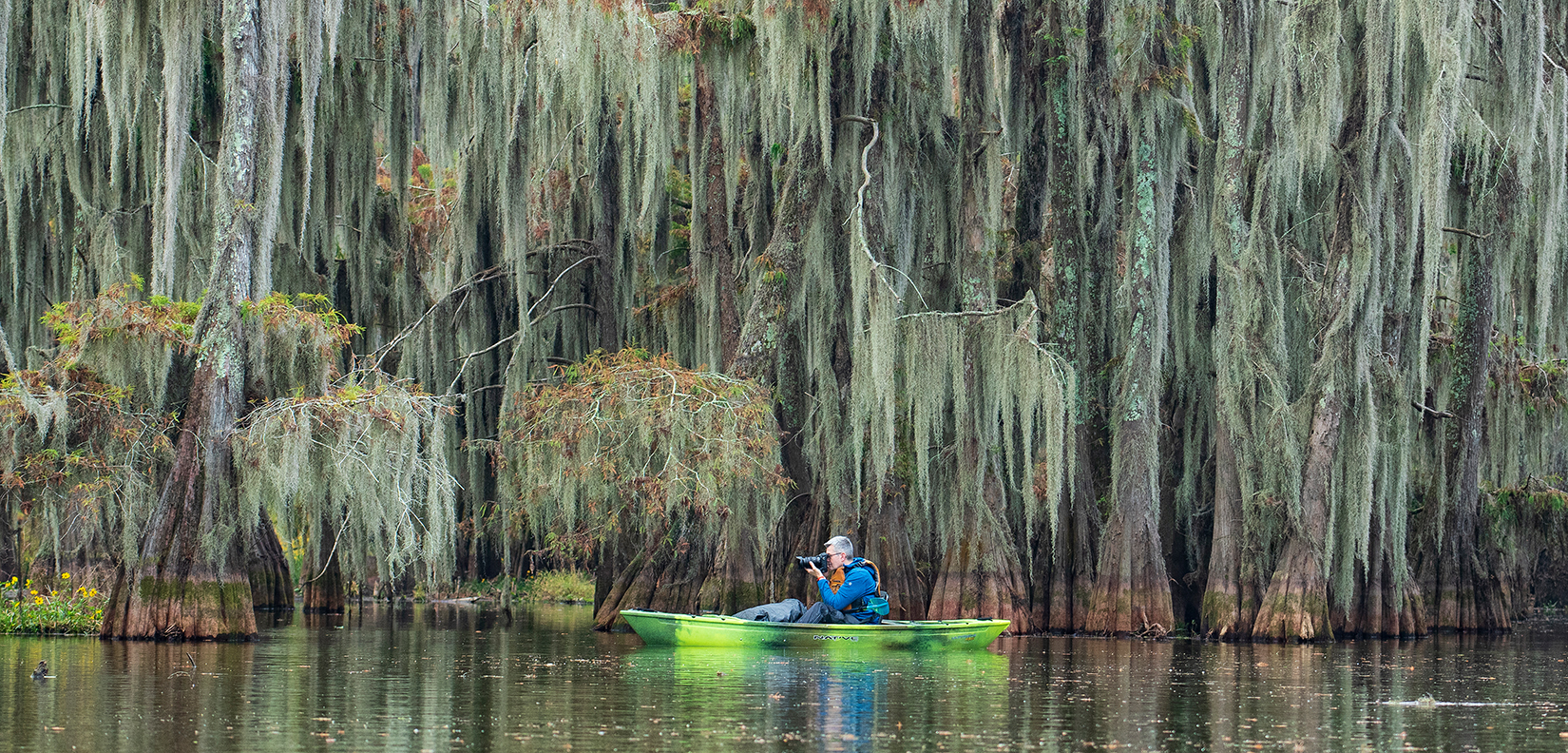
Photographing the Bayous of Louisiana and Texas is not always easy. Here are a few pointers and some location ideas for serious, and not so serious photographers.
A word of caution
Some areas described in this blog are wild, and you need to be prepared. If possible, do not go wading or paddling alone. Let people know where you go and inquire locally.
Weather conditions do change, and you should be aware of local laws. You don’t want to be out on the water during the “youth duck hunting day”, and never get close to an alligator nest in spring.
There are mosquitoes and venomous snakes, spiders and ants you should avoid. In the warm month be aware of snakes sitting on cypress knees, yes those roots sticking out next to the large trees, and be especially careful in high grassy areas and near bushes.
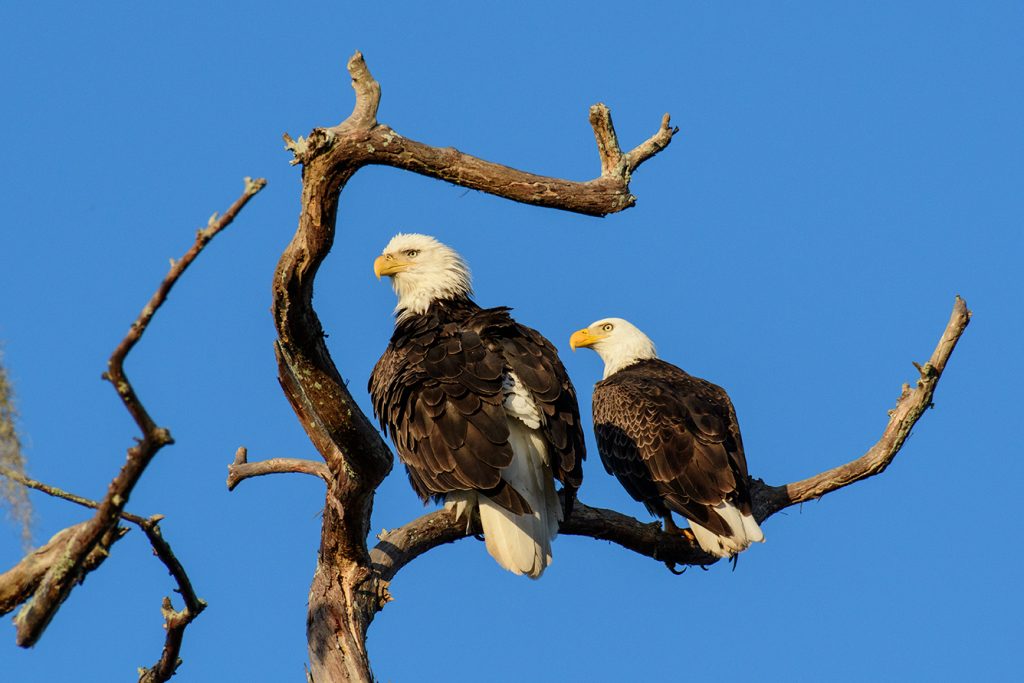
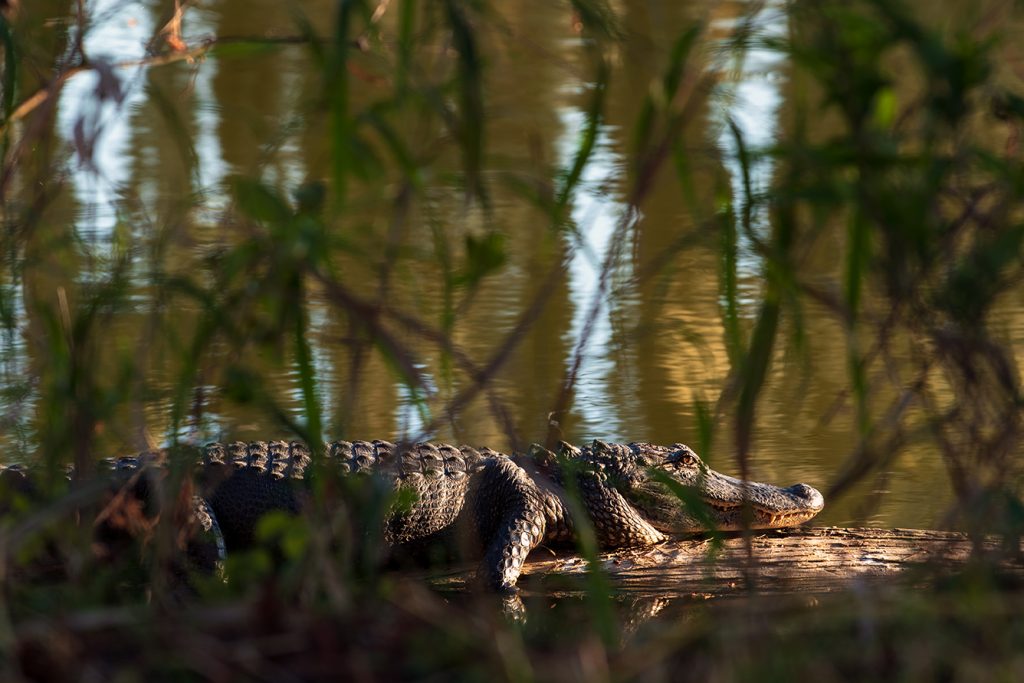
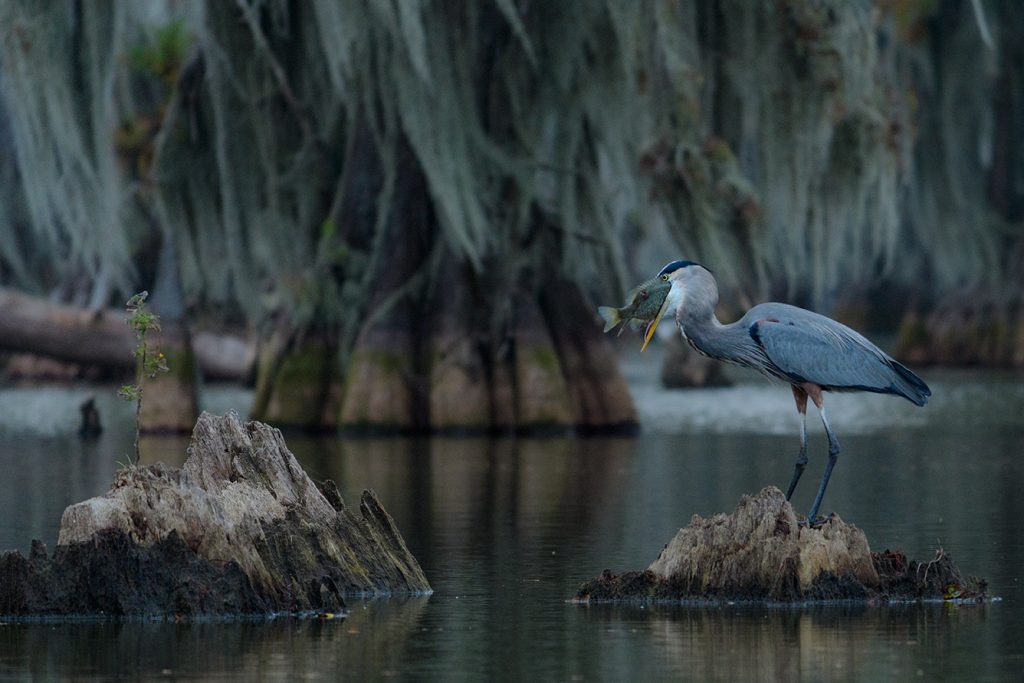
Now I tried my best to have you stay home, but if you insist, I will tell you where to go.
Also, please, don’t litter, even if it seems like a local pastime there. Don’t approach wildlife. If you have to get close, it means you have the wrong lens. Try not to disturb wildlife and don’t trample sensitive plants.
Now that you read this, I have good news for you. Caddo Lake in Texas is not the only great place for stunning Bayou photography. In Fact, the gigantic Atchafalaya Basin in Louisiana is full of fantastic photo spots.
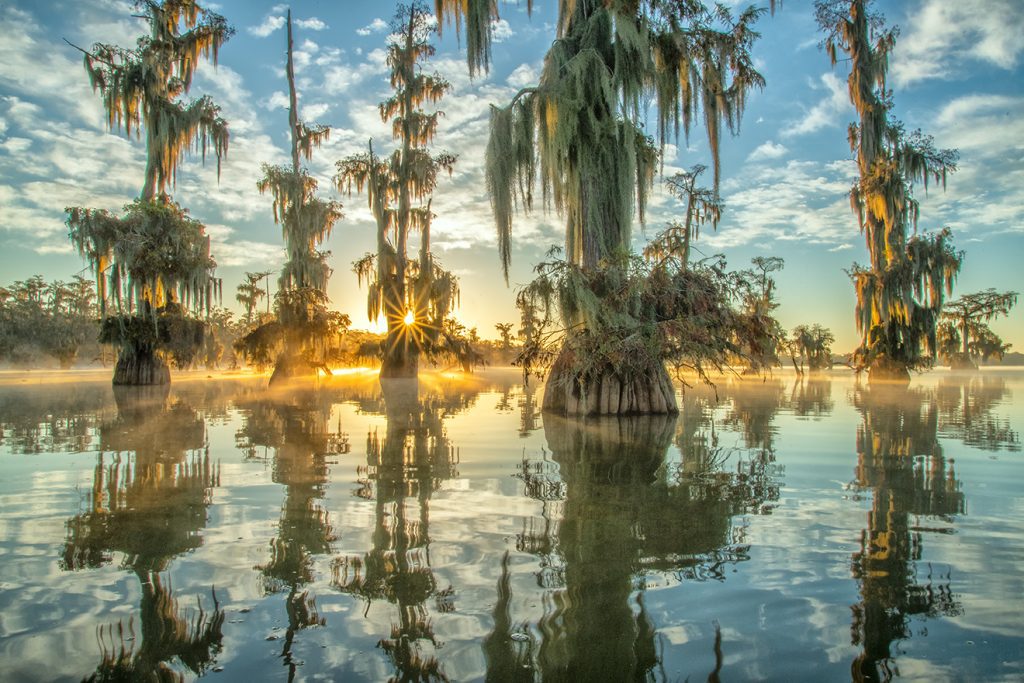
Gear:
I find on the water I use a lens 24 to 70 for my Nikon D850 the most. A second camera, in my case a Nikon D500, works well when combined with a 70-200 mm lens or in case of bird photography a 200-500mm zoom lens.
In low light conditions, you need to crank up your ISO. Owning a new model camera with little high ISO noise helps.
Shooting from land, you need a tripod and no wind for longer exposures. The Spanish moss moves too much in windy conditions.
Some folks bring waders and venture out from the boat to photograph in the water. In low water conditions, in the fall, that is possible. You need a sturdy, large and high tripod. Be careful not to get stuck in the muddy ground. Georg Popp, the Austrian photographer who just finished a book on the swamps, recommends bringing a cord to tie the boat to you. Otherwise, it will float away. Needless to say, venturing out of your boat is tricky business and not recommended.
Places to go
Caddo Lake, Texas. This quiet part of Texas slumbered for many years in a lost and lonely existence. Now, in the fall, it suddenly fills with photographers and eager locals showcasing their long hidden wonderland.
– Caddo Lake State Park has a pier overlooking Mill Pond. Nothing is as easy for fantastic images than this spot. The cypress trees in the pond here are often surrounded by placid water.I like the evening better than the morning due to a hill hiding the light of the early sun.
РIn the Hamlet of Karnack, at the dock of the Shady Glade Caf̩, you find nice vistas across the lake. Here some of the guides take you out on the lake. If you have a canoe or kayak, you can head out from here and explore the scenic spots nearby. We use Richard McFarland Jr. Rich@caddolakebayoutours.com
– Another favorite Pond is Benton Lake. About a 50-minute paddle from “Ole Mossy’s Up River, 1325 Moxley Camp Rd, Karnack, TX 75661”, where you can rent kayaks.
When to go
Fall: The week of October and first week of November are pretty good for fall colors. After that it can be even better in terms of color or, as happened before, too late and the leaves were blown down by storms.
Spring: Last week of May for fresh greens. Spring is a good time for birding and Gators.
Caddo Lake is further north, so for the Lafayette area you can be later in the fall and earlier in the spring.
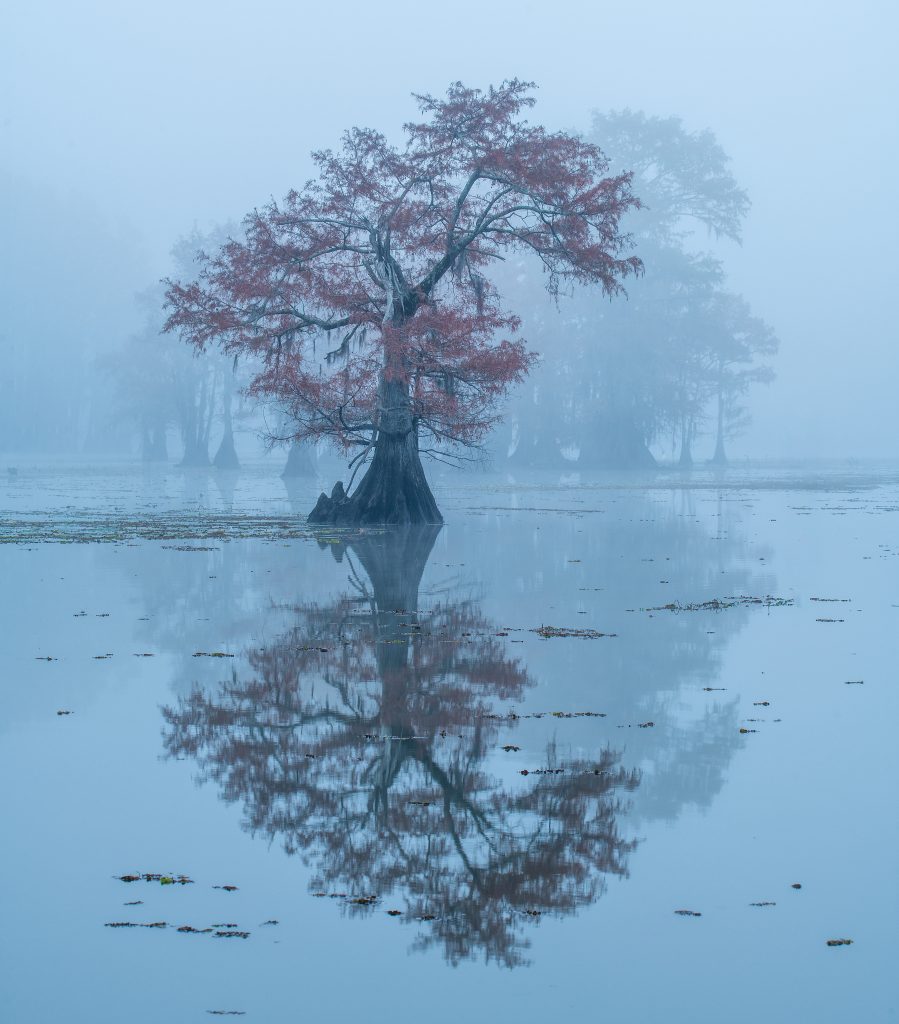
Lafayette Area, Louisiana.
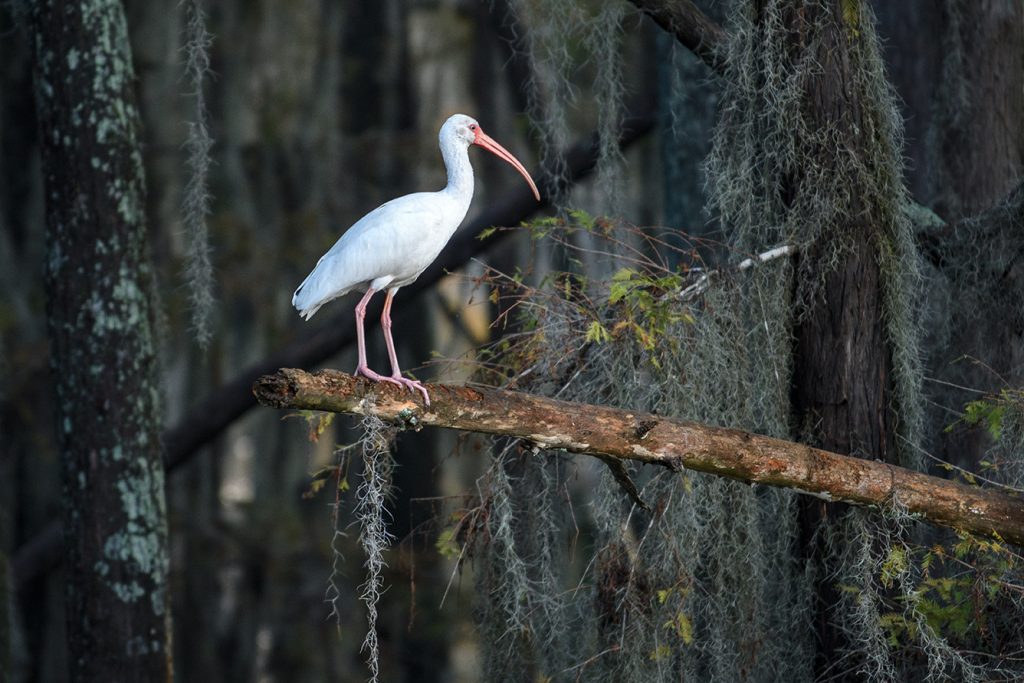
Making your base in Lafayette, Louisiana. Watch for frantic car traffic, people running red lights and drunk drivers. It’s a great place logistically for photographing the Atchafalaya Basin and Lake Martin.
-Henderson Levy. The places where you can book an airboat ride or rent canoes are also good places to get some Panoramic images of the swamp.
Atchafalaya Basin Landing Airboat Swamp Tours has some nice vistas, and you can rent canoes at nearby:
McGee’s Louisiana Swamp & Airboat Tours
– Lake Martin is probably your best and easiest way to get stunning photos and explore the cypress swamps by canoe. The lake is a reservoir, so you have water all year long. In some places in the Atchafalaya Basin and beyond, the Army Corps of Engineers lower the water level, so in the fall you may end up having too many trees on dry land. Be aware, only the east entrance to the lake is open.
– The boat ramp at Lake Martin is a good place to photograph at sunrise and if there are good clouds, sunset is great as well. You will be looking towards the sun in the evening.
– The gravel road from the boat ramp heads north and ends at a little car park. Follow the walking trail north and find great openings to photograph beautiful swamp scenes. Look out for Alligators sitting on sandbanks and snags. Once the weather turns cold in November, they are gone hibernating.
There is a little pier with good views as well. At sunset, you see flocks of Ibis heading back to the nature preserve nearby.
– By canoe or kayak. We usually rent kayaks from Pack and Paddle in Lafayette.
You can also call Champagne’s Cajun Swamp Tours and arrange Kayaks there.
At Lake Martin you paddle left or right from the boat ramp and will find beautiful cypress and tupelo scenes. A foggy early morning is magical.
Local fisherman put in their motorboats early in the morning. Once on the lake they mostly stay out on the far lake shore and don’t bother you. Watch for Bald Eagles, Ospreys and Woodpeckers. There are plenty of wading birds like Ibis, Herons, Egrets as well as Anhingas “snakebirds” at the lake.
– Lake Chicot State Park has several nice areas with cypress trees. Having a canoe helps. The trees here are smaller than at Lake Martin, but the lake has some quiet and beautiful stands of trees. We found the east and the south side the most photogenic.
Final word: We have no affiliation with the described outfitters and have no financial interest in these recommendations. Please travel at your own risk.









© Christian Heeb, November 2022

